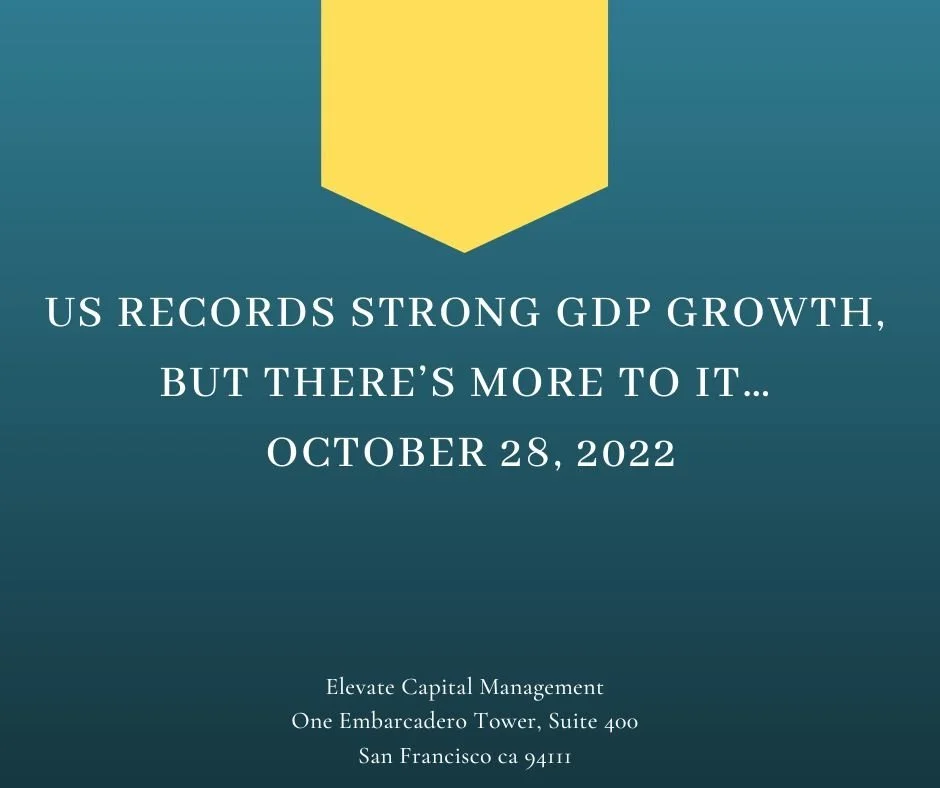US records strong GDP growth, but there’s more to it…
The Gross Domestic Product in the US, which is a measure of economic growth, expanded by 2.6% in the 3rd quarter, the strongest annualized growth rate since 2021. This comes after the economy contracted in the first half of 2022 and while this is good news, it’s important to not make outsized economic predictions.
Dig deeper into the numbers and you will see that demand has slowed to a 2 two-year low (0.5%) as the Fed continues to cool off a resilient economy and a strong housing market. With inflation high, and real wages unable to keep up with inflation, Americans imported less and exported more in the 3rd quarter. The weakened consumer demand, which consequently reduced the trade deficit, also contributed the GDP growth.
Consumer spending, the largest driver of the US economy and a critical factor that can tip an economy into a recession is also slowing down. The American consumers account for more than two-thirds of economic activity and have been largely responsible for driving up inflation and by the same token avoiding recession. Since 2020, The US government has doled out $2T in pandemic relief checks and US consumers are still sitting on more $1.4T in excess savings. However, there are now signs that consumers are dipping into their savings, as inflation erodes real incomes. A steep rise in credit card balances also suggest that some consumers are already tapping their savings.
US businesses are also sitting on $2.8T worth of cash, which is down from the start of the year but still higher than pre-pandemic levels ($2.1T). Businesses have taken advantage of solid demand and so far, have been able to protect their margins and pass the higher costs down to the consumers. Corporations continue to report rock-solid earnings and post-tax corporate profits reached 12% of GDP in the 2nd quarter, the highest since 1940s. While many corporations have used recession as a precursor to promote restructuring and cost cutting, most have kept their employees and as long as they are making profits, they will continue to focus on hiring and not firing.
While inflation is rampant, US consumers have been largely been spared the soaring energy prices Europe is facing today. In fact, the US, economically speaking, has benefitted from the Russian invasion. The exports of both crude oil and petroleum are at an all-time high, which also contributed to the GDP growth (by way of reducing trade deficit). While property prices are down, the inventory of available homes remains so low that property prices have kept up against the onslaught of the Fed rate hikes.
The economy looks strong, but it remains in a precarious position. America’s workforce today is roughly the same size it was in 2019. The strong headline number is a clear signal that we are not in a recession, but the recessionary fears will continue to rise as the Fed continues to hike interest rates. The FED might take comfort in slowing consumer demand, but we doubt this will impact monetary policy. Sooner or later, continued rate hikes will drag on the American economy and that’s not entirely bad. The Fed will rightly try to squash high inflation, which must be flattened. It’s important to note that the GDP report contained encouraging news which showed the chain-weighted price index, a measure of inflation in the economy, rose at 4.6% rate in Q3 decelerating from 5.3 % in the 2nd quarter. This will be welcomed by all.
For now, the American consumers, American businesses and the American currency look as resilient as ever.








